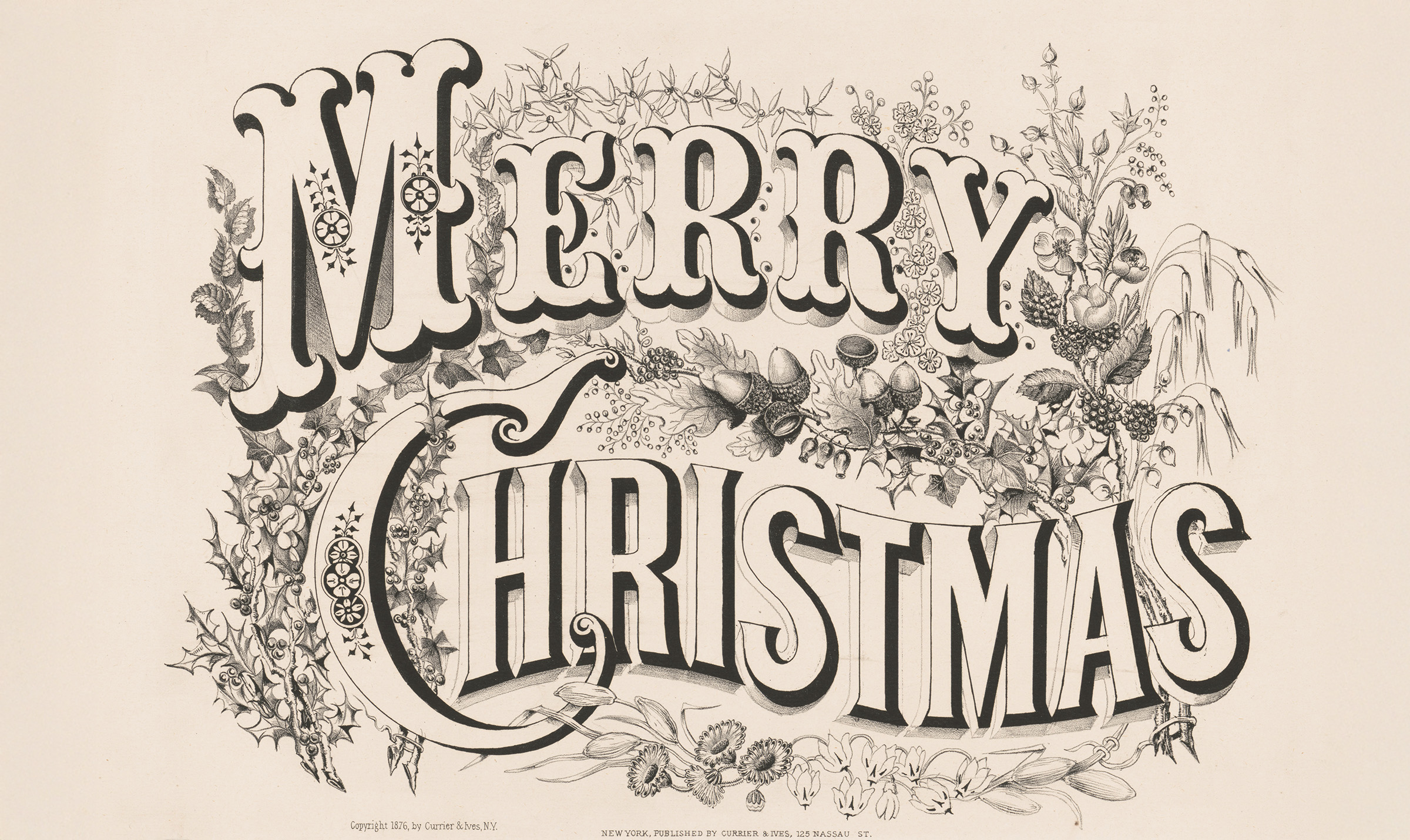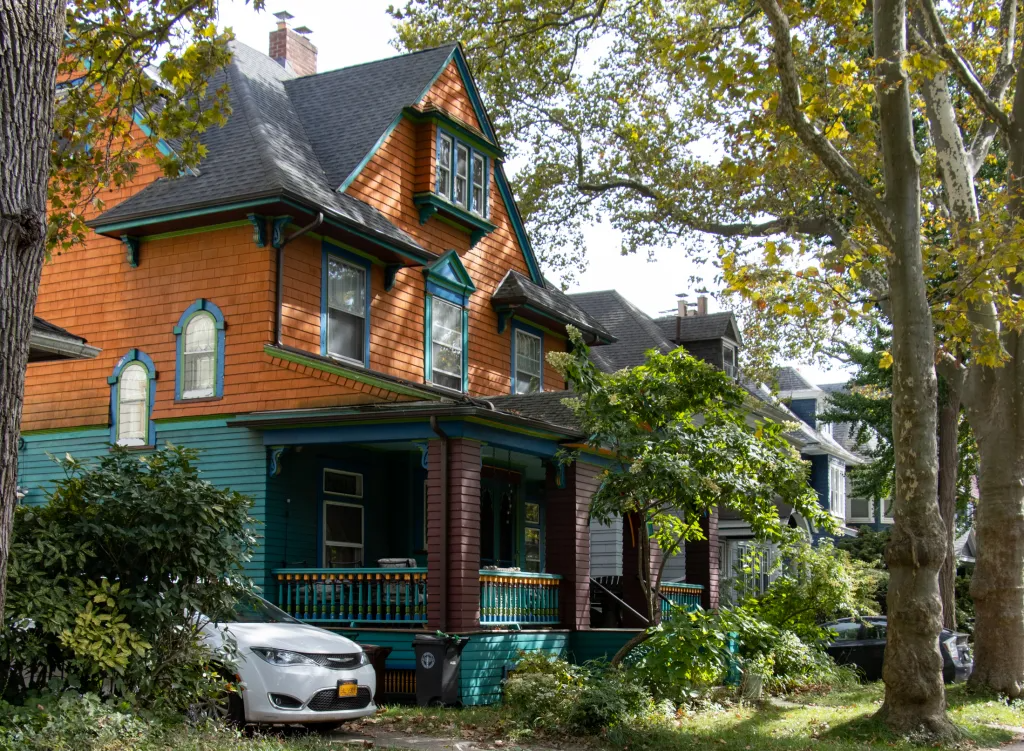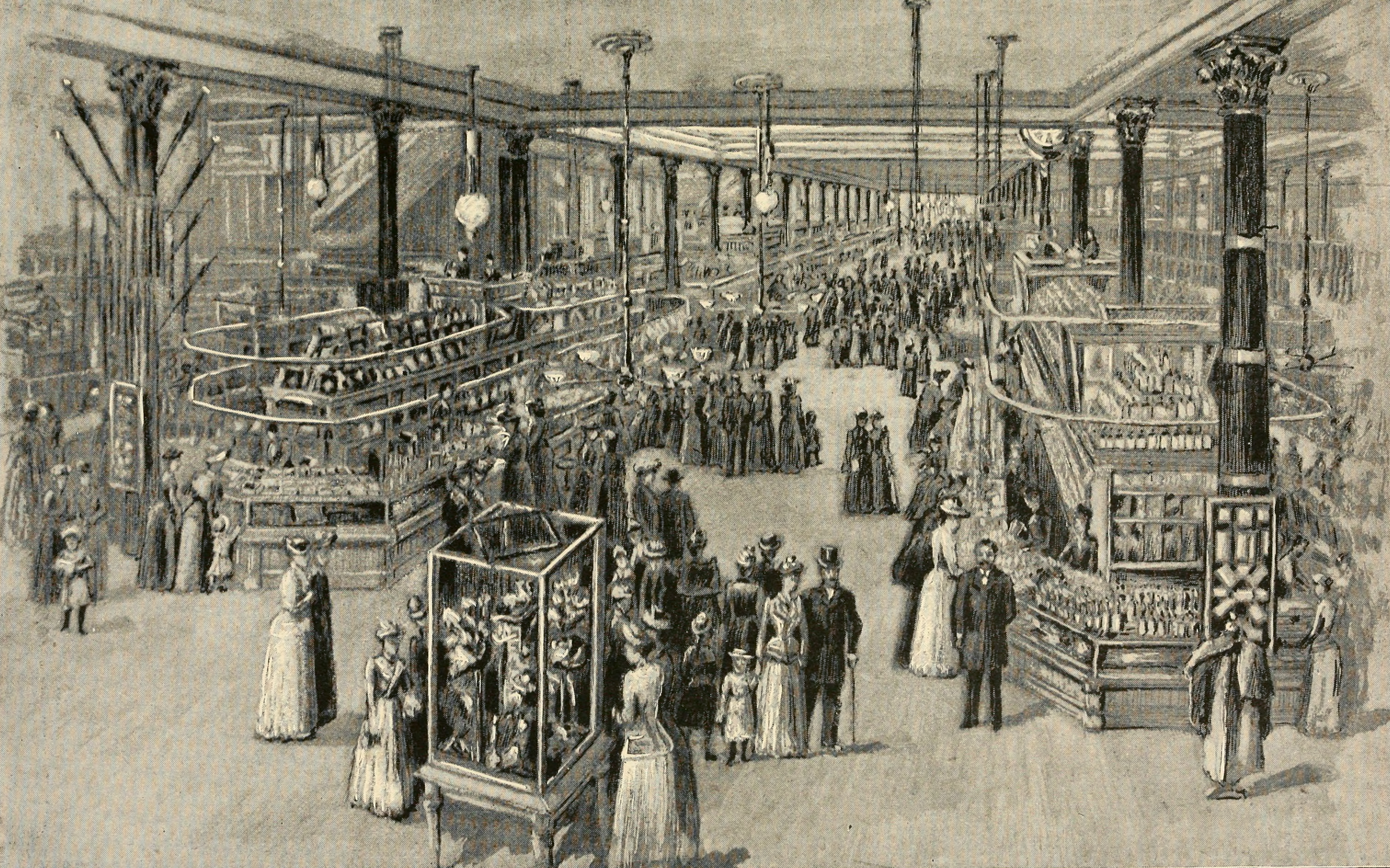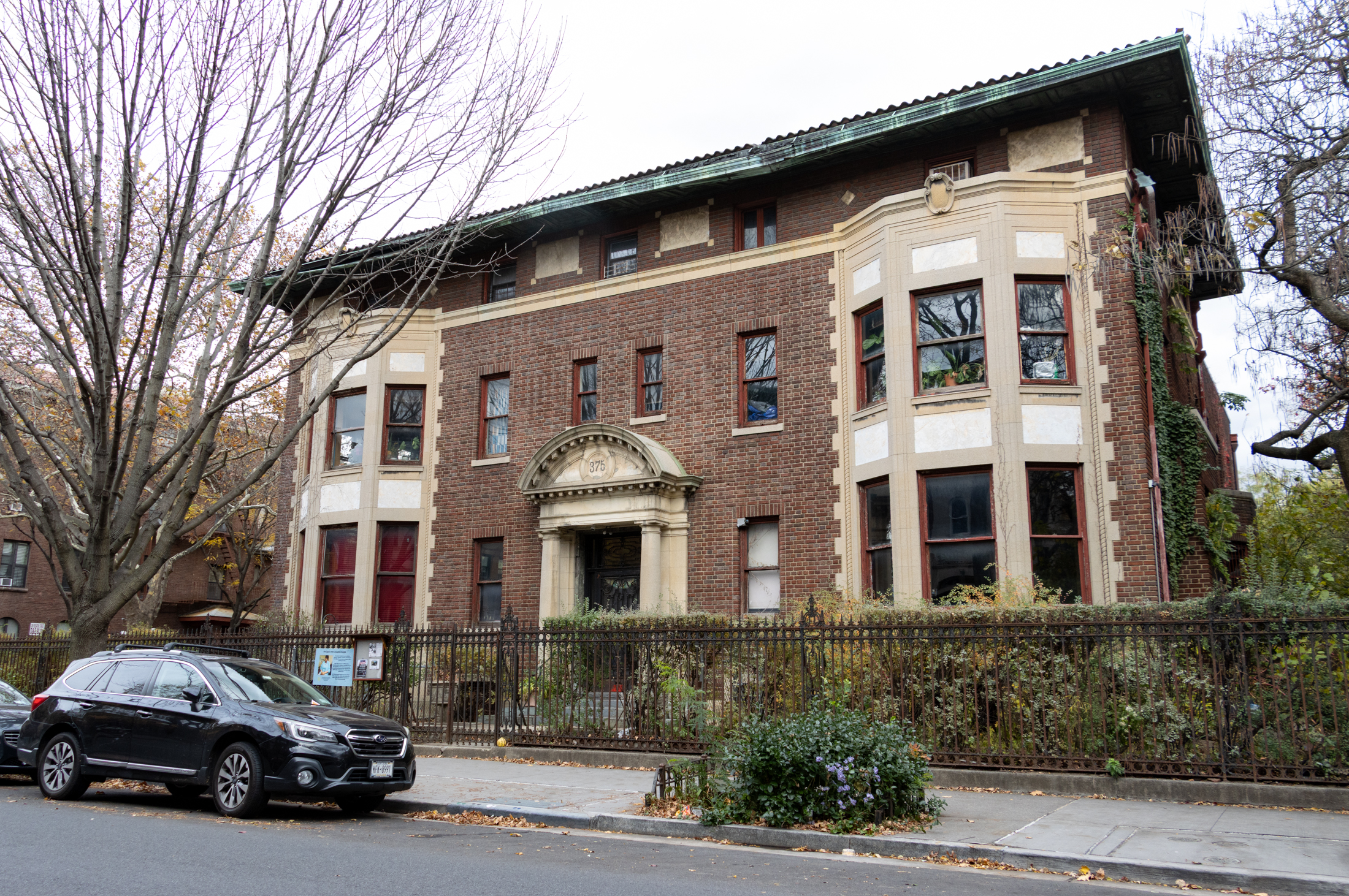House of the Day: 915 Sterling Place
The four-story house at 915 Sterling Place is a little on the narrow side (17 feet) but makes up for it with an extra-deep lot (120 feet). The listing claims that the house is “loaded with original details” but the one interior photo included isn’t too convincing; the fact that it’s divided up into four…

 The four-story house at 915 Sterling Place is a little on the narrow side (17 feet) but makes up for it with an extra-deep lot (120 feet). The listing claims that the house is “loaded with original details” but the one interior photo included isn’t too convincing; the fact that it’s divided up into four units also doesn’t bode particularly well for the preservation of interior details, but this part of town does have some great woodwork so maybe there’s something to it. And what about the asking price of $895,000? We suspect it’ll go for a little less, especially since the seller is already being touted as “motivated.” Anyone been inside?
The four-story house at 915 Sterling Place is a little on the narrow side (17 feet) but makes up for it with an extra-deep lot (120 feet). The listing claims that the house is “loaded with original details” but the one interior photo included isn’t too convincing; the fact that it’s divided up into four units also doesn’t bode particularly well for the preservation of interior details, but this part of town does have some great woodwork so maybe there’s something to it. And what about the asking price of $895,000? We suspect it’ll go for a little less, especially since the seller is already being touted as “motivated.” Anyone been inside?
915 Sterling Place [Elliman] GMAP P*Shark





9:27 there are a lot of us like you who have an income from 2 hard-working adults well enough into their career to make 100-200k together. We’ve delayed childbirth, we’ve scrimped and saved for many years, maybe someone got a small inheritance. In some way, some of us put together a reasonable downpayment. Now we are faced with trying to find a home of our own (to probably share w/ tenant), and we’re told we’re not middle class, but wealthy and therefore evil landed gentry derided by those on this blog that bought in the 70s, 80s, or 90s. Rich people are able to buy a home long before they reach 40. Having $1M does not make you rich in NYC or many other places in the US these days. You are middle class. Those making 50k for the entire household in ny are working class, not middle class.
Just a note about the middle class buying homes these days. My husband and I each make salaries of about 75K which I used to think was decent but now that we are seeking a house, we feel pretty poor. That said, we have a big chunk of capital from 2 different real estate investments (an apt we live in, and another we sold) so we are looking at homes in the 1m-1.5 m range, ideally with a tenant, but not necessarily so. We were hoping to buy in PS, and despite what this blog leads people to believe, have seen some PS homes in the last year in this range (modest, but nice ones), though inventory is currently low. We’re not ready to move to Crown Heights, but are considering Prospect Heights, Windsor Terrace, Gowanus, etc. So my question is: are we considered “middle class” – a family of 4 with annual income of about 150K but assets of about 1million? It’s all so cockamamie now, that I no longer have perspective, and I suspect that there are a lot of folks out there like us who are not necessarily pulling in huge salaries but have a relatively high net worth due to earlier real estate investments – but that those investments do not make them “rich” in a city where a million dollar brownstone is considered cheap.
I suspect 8:18 is right, but it’s not like the hasidim are really part of any community they inhabit. I.e., they ain’t gonna invite you over for coffee and scones…
As for this house, the wonderful essay above notwithstanding, I don’t find anything remotely inspiring about it, at any price. I’d have to see the rent rolls, but i don’t see any investor parking their down payment here in hopes of making a killing….
hey montrose you are inspiring and i think most of your comments are well thought out. That being said this place is a total dump for that kind of $$…
The crown heights income stats are skewed by the under-reporting of income by the huge hasidic community that nobody is mentioning.
The house is whatever. Montrose, you’re a gem! I Really enjoy and support your stance.
Brownstoner,
I really enjoy the coverage of Crown Heights, whatever the tussles among the bloggers.
Sure, the house shown is small and narrow, but it’s a nice representative of the kinds of town houses I knew in the neighborhood as a youngster. (When you’re a kid, who cares about the difference between 17-feet and 25-feet lots, something parents with children should think about when prospecting in the neighborhood.)
Crown Heights row houses were terrific in the 50’s, as they are today. My family lived an apartment (very nice, with wainscotted walls, French doors to the living room and dining room, parquet de Versailles floors, faux fire place, pantry with swinging door to the dining room, deep window seat and high casement windows in the living room, etc.) but nothing beat my friends’ houses. These were tall, deep, dark, and a little mysterious, whatever my friends’ parents’ attempts at being “modern.” No low-slung sofa or Scandinavian furniture seemed to brighten these places up, which was fine with me. The carved wood, steep stair cases, and high rooms had an Adams Familyesque quality that was a real kick.
And boy, were they great for parties, especially the kind that would spill onto the stoops into the areaways next to the sidewalks and into the backyards, where occasionally a tent was put up. One friend had an especially magical place. It was off Grant Square on Pacific or Dean Street, I think, with not just front and backyards, but a sideyard, so birthday parties could stretch a hundred feet outdoors. This particular house was in grey brick (or maybe it was just soot-encrusted) and was every child’s dream of the haunted house. (I wonder if it’s still there.) The irony was that the owners were among the most brightly stylish of my parents’ friends with 50’s technicolor furniture, wall-to-wall carpeting, and a maid in a bright pink uniform (Charles Adams on the outside; cinema-scope on the inside).
Also, Crown Heights row houses provided neighborhood services. Our dentists, orthodontists, pediatricians, and general practitioners all had their offices in either the ground or parlor floors. Most of them were older, long-time residents of the neighborhood. Very dignified and (to use an outmoded term) courtly. And they were both black and white, men and women, which was important for kids to see.
Looking back, I now realize that the architects of these places were terribly inventive. The oldest of them were single-family, but newer ones (meaning those built a little before or after the First World War), often were two-family, with duplex miniatures of the private house placed one on top of another. These homes were smaller and had lower ceilings, but were brighter, given their decades’ preference for painted as opposed to exposed wood. And they were my favorites, probably because I had to climb a narrow stairhall from the street then pop into a hearth-lit living room on the third floor. (A nice surprise for somebody who lived in a single-floor apartment.)
One incident makes me chuckle. A friend had a backyard party near Brower Park. His mother was very grand. Their house, she kept repeating to her son’s guests, was CUSTOM designed, a fact imparted to get us to respect the property and all it meant to the family. This house did seem the newest of the ones I visited, a red-brick neo-Georgian number (putting it somewhere between the 20’s and 40’s, if I’m correct) which may or may not have been built for the family. (I won’t discount the possibility that the lady’s prestige was borrowed.)
I’ll repeat what I’ve written in earlier posts: for all of Crown Heights’ qualities, the 50’s and 60’s were times of enormous changes for it and the city as a whole. But to this day, the emotional part of me doesn’t fathom why so many middle-class people fled the city during that period. Not when they had buildings and streets this good. If only the FHA guaranteed low-cost mortgages to racially-integrated neighborhoods and not just white suburbs, what a different city New York (and most others in America) would be.
Thanks again, Brownstoner, for reminding me of the time back in the day.
Nostalgic on Park Avenue
5:14, you certainly have some valid points, and I hear you. Buying homes anywhere in Brownstone Brooklyn is very hard for the middle class, and to do so on $50K will take some creative financing, such as having a very large down payment, so the mortgage is affordable, having at least 2 market rate tenants, and perhaps buying with another person or persons. I realize everyday that I was fortunate to be able to buy when I did, and probably couldn’t now, unless I follow my own advice.
But as to living here, now – while it may be very difficult for the middle class to buy here, it is still possible to rent a very nice apartment for a reasonable sum. The choices are more than to ve landed gentry, or to be on welfare. The large population of middle class renters also help fuel the economic engines here, and they are a vital part of our community’s growth. So there are still middle class people moving in.
This is a nice block and great house on the outside. Too bad it’s a 7-family. Anyone contacted the broker to confirm if it will be sold with the tenants in place? It’s really close to the trains..